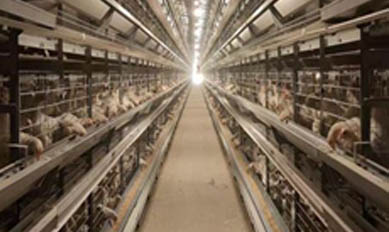Efficient Layer Cage Systems for Modern Poultry Farming Solutions
Nov . 27, 2024 06:28 Back to list
Efficient Layer Cage Systems for Modern Poultry Farming Solutions
The Benefits of Poultry Farm Layer Cages
Poultry farming is a vital industry worldwide, providing an essential source of protein through the production of eggs and meat. Among the various methods of poultry farming, layer cages have emerged as a prominent solution for egg-laying hens. These cages, specifically designed to accommodate hens in a controlled environment, offer numerous benefits, making them an attractive option for poultry farmers looking to optimize productivity and meet increasing demand.
Efficiency and Productivity
One of the most significant advantages of using layer cages is the efficiency they bring to poultry farming. These cages are designed to maximize space utilization, allowing farmers to house a larger number of hens in a smaller area. This increased density ensures that farmers can produce more eggs without the need for extensive land. The vertical design of layer cages enables farmers to stack multiple tiers of cages, effectively doubling or tripling the number of hens in a given space.
The productivity of hens in layer cages is often higher than those in traditional free-range systems. The controlled environment reduces stress on the birds, which can lead to higher egg production rates. In layer cages, hens can be managed more effectively regarding their diet and health, further enhancing their productivity. Farmers often report significant increases in egg output, sometimes reaching above 300 eggs per hen per year.
Health and Biosecurity
Poultry diseases can travel rapidly within a flock, leading to significant economic losses for farmers. Layer cages help mitigate this risk by isolating individual birds from one another. This isolation limits the spread of disease and allows for more straightforward management of health monitoring and vaccination protocols. Additionally, because layer cages can be constructed in a manner that facilitates easy cleaning and disinfection, the risk of pathogen buildup is significantly reduced.
Biosecurity is a critical concern for all poultry farmers, and layer cages provide a controlled environment that minimizes external risks. Farmers can implement strict biosecurity measures, ensuring that only healthy birds are introduced into the system. This focus on health not only benefits the hens but also results in a more reliable supply of high-quality eggs.
poultry farm layer cage

Animal Welfare Considerations
Critics of layer cages often raise concerns about animal welfare, arguing that confining hens to small spaces can cause distress. However, modern layer cage systems are designed with animal welfare in mind. Innovations in cage design have prioritized the comfort and well-being of the hens. For instance, enriched cages provide hens with more space, perches, and nesting areas—allowing them to exhibit natural behaviors while still benefiting from the advantages of a cage system.
In addition, farmers can monitor the hens closely and ensure they are being well cared for. The design of layer cages allows for easy access, enabling farmers to conduct regular health checks and provide timely interventions when necessary. As animal welfare standards continue to evolve, producers are increasingly adopting practices that ensure the well-being of the birds in their care.
Environmental Sustainability
Layer cages also contribute to environmental sustainability in poultry production. The efficient use of space and resources means that less land is required to produce a given amount of eggs compared to traditional methods. Furthermore, the waste management systems implemented in modern layer cage facilities minimize the environmental impact of poultry farming. Proper waste disposal and recycling practices can convert manure into valuable compost, reducing the overall carbon footprint of the farm.
Furthermore, layer cages typically use a less significant amount of feed per egg produced compared to free-range or barn systems. This efficiency translates into reduced resource consumption, ultimately benefiting the environment.
Conclusion
In conclusion, layer cages present a viable solution for modern poultry farming. Their advantages in efficiency, health management, animal welfare, and environmental sustainability make them an appealing option for farmers seeking to meet the demand for egg production. While it is essential to continually assess and improve animal welfare practices within these systems, the benefits of layer cages in enhancing productivity and ensuring reliable egg supply remain substantial. As the poultry industry evolves to meet global needs, layer cages will likely continue to play a crucial role in shaping the future of poultry farming.
-
Automatic Feeding Line System-Pan Feeder Nipple Drinker|Anping County Yize Metal Products Co., Ltd.
NewsJul.29,2025
-
Hot Sale 24 & 18 Door Rabbit Cages - Premium Breeding Solutions
NewsJul.25,2025
-
Automatic Feeding Line System Pan Feeder Nipple Drinker - Anping County Yize Metal Products Co., Ltd.
NewsJul.21,2025
-
Automatic Feeding Line System Pan Feeder Nipple Drinker - Anping County Yize Metal Products Co., Ltd.
NewsJul.21,2025
-
Automatic Feeding Line System - Anping Yize | Precision & Nipple
NewsJul.21,2025
-
Automatic Feeding Line System - Anping Yize | Precision & Nipple
NewsJul.21,2025






